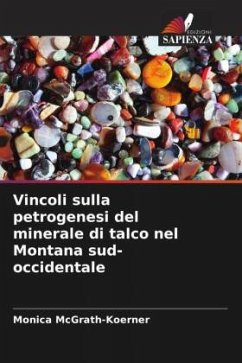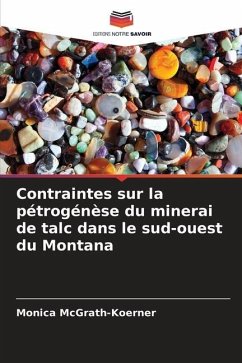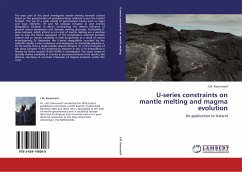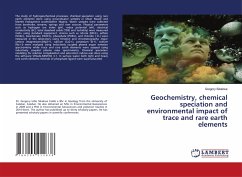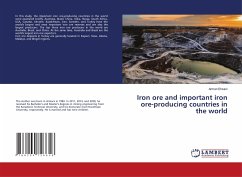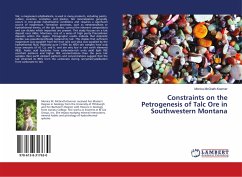
Constraints on the Petrogenesis of Talc Ore in Southwestern Montana
Versandkostenfrei!
Versandfertig in 6-10 Tagen
24,99 €
inkl. MwSt.

PAYBACK Punkte
12 °P sammeln!
Talc, a magnesium phyllosilicate, is used in many products, including paints, rubber, ceramics, cosmetics, and plastics. Talc mineralization generally occurs in low-grade metamorphic conditions and requires a significant source of magnesium. Formation processes, such as metamorphism or hydrothermal events, of the talc bodies, control the inherent compositions and can dictate which impurities are present. This study focuses on a talc deposit near Alder, Montana, one of a series of high purity Precambrian deposits within this region. Petrographic results indicate that dolomitic marble was pseudo...
Talc, a magnesium phyllosilicate, is used in many products, including paints, rubber, ceramics, cosmetics, and plastics. Talc mineralization generally occurs in low-grade metamorphic conditions and requires a significant source of magnesium. Formation processes, such as metamorphism or hydrothermal events, of the talc bodies, control the inherent compositions and can dictate which impurities are present. This study focuses on a talc deposit near Alder, Montana, one of a series of high purity Precambrian deposits within this region. Petrographic results indicate that dolomitic marble was pseudomorphically replaced by talc. This implies that sufficient magnesium was supplied from the host rock and silica was supplied by the hydrothermal fluid. Relatively pure (90% by XRD) talc samples have only trace amounts of Al, Ca, and K, and are very low in rare earth elements (REE). Acetic acid leachates from carbonate-rich units yield light REE enriched patterns and higher REE concentrationsthan the pure talc samples. Rare earth element patterns and concentrations suggest that the talc inherited its REEs from the carbonate during recrystrecrystallization from carbonate to talc.




